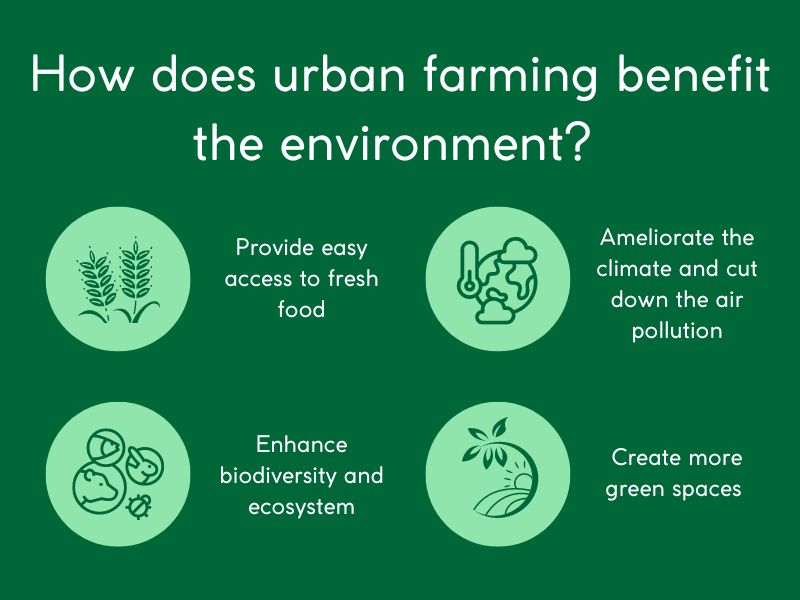The Only Guide for City Blooming
The Only Guide for City Blooming
Blog Article
City Blooming - Questions
Table of ContentsThe Buzz on City BloomingUnknown Facts About City BloomingThe Best Guide To City BloomingCity Blooming Fundamentals ExplainedNot known Details About City Blooming
Nature has extraordinary effects on our physical and mental health, so it's no surprise that an easy delicious on a desktop or some potted natural herbs on a windowsill can immediately boost a space. Take those plants a step better, and you'll cross into the region of metropolitan horticulture, which brings a lot more advantages to individuals and neighborhoods alike.What Are Urban Gardens?Urban horticulture, occasionally calledcity gardening, is defined as "the process of growing green spaces in urban settings. "It incorporates a variety of tasks from city farming to outdoor patio yards to community yards - container and raised bed gardening etc.. Urban gardens can be often tended by individuals, teams, business, or organizations. The quantity and variety of food grown can vary extensively, in addition to the size of the job itself, but city horticulture initiatives are all rooted in a city setting.
Whether they consist of a collection of pots on a porch or a cluster of plots on an uninhabited whole lot, these yards give greater than food, supplying a host of environmental, economic, and social advantages. Because produce is grown in neighborhood settings instead of far-away ranches, urban horticulture decreases transportation demands, therefore reducing carbon emissions.
9 Easy Facts About City Blooming Explained
Urban yards can be tools of social modification that address inequities, systemic racism, and neighborhood advancement issues. Here at Appetite For Modification, we utilize food as a device to construct health, wide range, and social modification in North Minneapolis. We bring individuals with each other to learn, cook, consume, and grow food, developing modification that lasts.
Together, we can create well-rooted and growing modification!.

The main lesson we, once again, must find out is that cities are not divorced from nature. They belong of the larger biome in which they're located. As planners and designers, we are trained to believe holistically. While these disciplines promote cities as helpful, no city is excellent not even close, and the susceptabilities and interconnections of the global supply chain has affected everybody in unexpected methods.
An Unbiased View of City Blooming
I will check out versions from the past that promoted urban gardens and gardeners, and show what worked and what did not. I will certainly discuss the chances and difficulties of being a metropolitan gardener, you could look here what is required to establish a garden of your very own, and what regulations and criteria stand in the way of making cities better at promoting urban yards.
The quantity of time lost obtaining to and from conventional workplaces has actually been well documented. The gathered unfavorable effects of pollution and stress and anxiety that result from commuting alone by vehicle as most Americans do are substantial.
The ability to come to the workplace for partnership and society, and stay home for concentrated work is a concept that conserves time, is much better for the atmosphere and is a smarter usage of restricted sources. What hasn't yet taken hold is the link in between these changes in habits and exactly how cities can respond.
A Biased View of City Blooming
What are the wellness influences of our cities suddenly overdesigned for autos? How can our city framework (roadways, utilities) carry out much better, not just as avenues to relocate individuals and items, but as contributors to natural systems? Urban phenomena such as smog, poor water top quality and the 'heat island effect' can be reduced by greening our streets, amazing our lorries and growing our car park.
In a current article in the Wall Street Journal, Richard Florida discussed the phenomenon of 'zoom cities,' which attract remote employees by producing a photo of a higher high quality of life (home and garden). He created: "For cities, remote job alters the focus from enticing companies with special offers to enticing talent with services and amenities
Urban gardening now has lots of options to help you expand food any place you have area, such as with container gardening, hydroponic horticulture, and roof horticulture. This indicates you can manage the location where you expand the food, and fret less regarding environmental problems like drought or cold weather. You can choose what you desire to grow, how you intend to expand it, and where you want to grow.
Rumored Buzz on City Blooming
Growing mass-produced food with conventional farming approaches takes a lot out of the planet. Beyond the many resources that are used on the farm, the food then needs to be moved where it is grown to a store near you. That needs shedding a great deal of gas. Typically in the U.S., food is now delivered in between 1,500 and 2,500 miles to get to the consumer.

Report this page